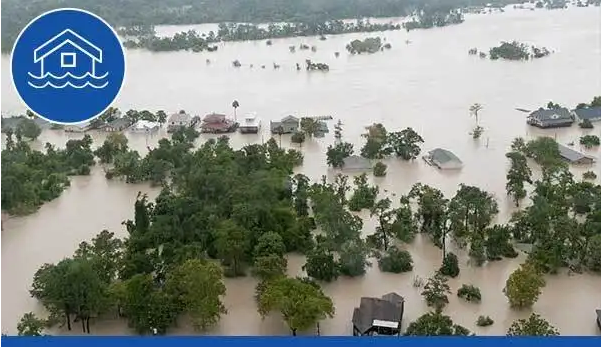What Is Water Level, and Why Is It Measured?
Water level is one of the most commonly measured parameters, as accurate level data are essential for many industries. While climate change, pollution monitoring, and industrial water usage are broad reasons for monitoring water levels, more specific applications are discussed later.
Level is perceived as one of the most straightforward water parameters. In general, it is the level of water in a body of water, in groundwater, in a tank, etc. However, there’s a lot to unpack with this parameter. Not only are there very different water level applications and technologies used to measure it, but there are also a variety of terms used when describing water level, some of which have only subtle differences. These include:
Water level: The height or elevation of water above (more common) or below (less common) a user-specified point. This term is used in many applications.
Depth: When measuring in a groundwater well, this is the distance from the land surface to water in the well. In surface water, depth is the distance from the water’s surface to a specific point, typically the bottom of the water body or the location of a sensor.
Gage height: Used to describe the water level of a river or stream. Level measurements in these applications are often collected at stream-gage stations.
Tide Gage: Describes a water level sensor used to monitor changes in sea level.
Elevation: Used when describing the height of water above sea level.
Why Measure Water Level in Rivers and Streams?
Gauge height, sometimes referred to as stage, is the water level of a river or stream. Gauge height changes due to precipitation (or lack thereof), snow-melt, and water management decisions.
A common reason to gather gauge height data is to establish a baseline profile. These data are helpful to engineers that are designing structures such as bridges or levees. Additionally, ecologists can use baseline data when studying aquatic habitats and environmental impacts. Real-time gauge height data can indicate when river levels are beginning to exceed the baseline, providing the local community an early warning of dangerous flood conditions.
Heavy rain from Hurricane Harvey caused rivers and streams to swell, resulting in devastating flooding in the region. Level sensors allowed local authorities to monitor this flooding in real-time.
Streams in arid regions can rise quickly after large storms, and water level monitoring systems can alert local authorities to these changes.
Non-contact sensors have an advantage over contact sensors in some applications. They can be used when water may not always be present – bubblers can also be used in such an application – or when the sensor cannot be placed in the water due to other hazards. This also makes non-contact sensors safer for those that maintain them. Another advantage is there’s no concern of sensor damage due to debris and flood conditions. It is for these reasons that many professionals prefer non-contact sensors.
It should be noted that non-contact sensors are susceptible to vandalism and damage from wind/severe weather events. They also need to be calibrated to measure the water level accurately and to eliminate inferences.
Radar Sensors & Ultrasonic Sensors
Ultrasonic sensors are similar to radars, as both sensors are typically installed above the water’s surface. However, ultrasonic sensors use ultrasonic sound waves – these require a medium to pass through, unlike microwaves – to determine the distance from the face of the sensor to the surface of the water by timing how long it takes the signal to return.
There are five questions to consider when selecting a water level sensor:
1. Do I need a non-contact sensor?
There are two main types of water level sensors – contact and non-contact. Contact sensors are placed in the water when measuring level, while non-contact sensors are not. This is the most logical place to begin identifying the ideal sensor for you.
Some customers strongly prefer non-contact sensors because the measurement solution (e.g., the river, chemicals in a tank, etc.) doesn’t contact the sensor; therefore, the technician does not need to come in contact with the solution. For many, this means non-contact sensors are a safer option, which is why so many customers prefer them.
While a non-contact sensor sounds like a great option, they aren’t for everyone. As you’ll see, these sensors can be expensive – keep reading!
2. Do I need continuous data?
Another significant consideration is how data will be recorded. Crest-stage gages, staff gages, and wire-weight gages require that someone physically visit the site to record a data point. This requirement is too burdensome for many end-users, and in many instances, real-time data is needed.
Other instruments provide continuous real-time data since they measure regardless of whether someone is present or not. Data collected by the instrument can be transmitted to a database. Authorities can view this real-time data and respond to events (e.g., flooding) quickly and appropriately. Those who use a river for recreation – kayakers, anglers, and others – also often need real-time gage height data to ensure the river level is safe and appropriate for their activity. These are just a few instances where continuous real-time data are essential.
3. What application will the sensor be used in?
Wastewater, Water Treatment, Rivers, Streams, Channels, Reservoirs, Lakes, Ponds, Coasts, Groundwater.
Industry - depends on the specific application. Please contact YSI to discuss your options.
4.What's my budget?
Last but not least is the cost of each sensor. The SKE provides a general idea of the cost of various Radar and Ultrasonic level sensors, ranging from less than $1,00 to over $10,00, these are not overly expensive options.
Still not sure which level sensor is right for your needs? Feel free to ask our experts or schedule a free virtual consultation today!

 CN
CN


